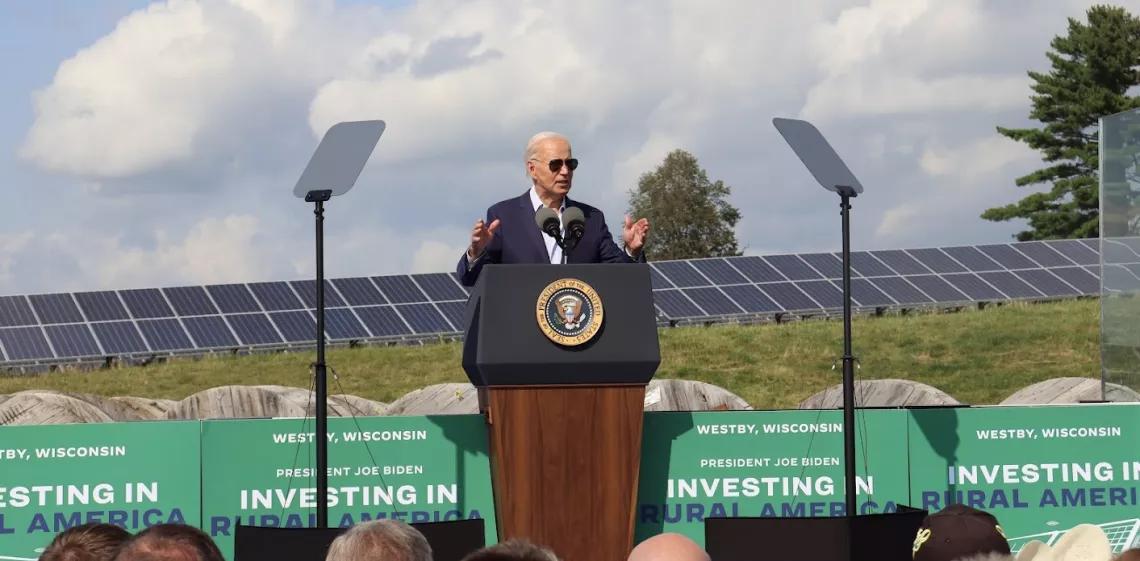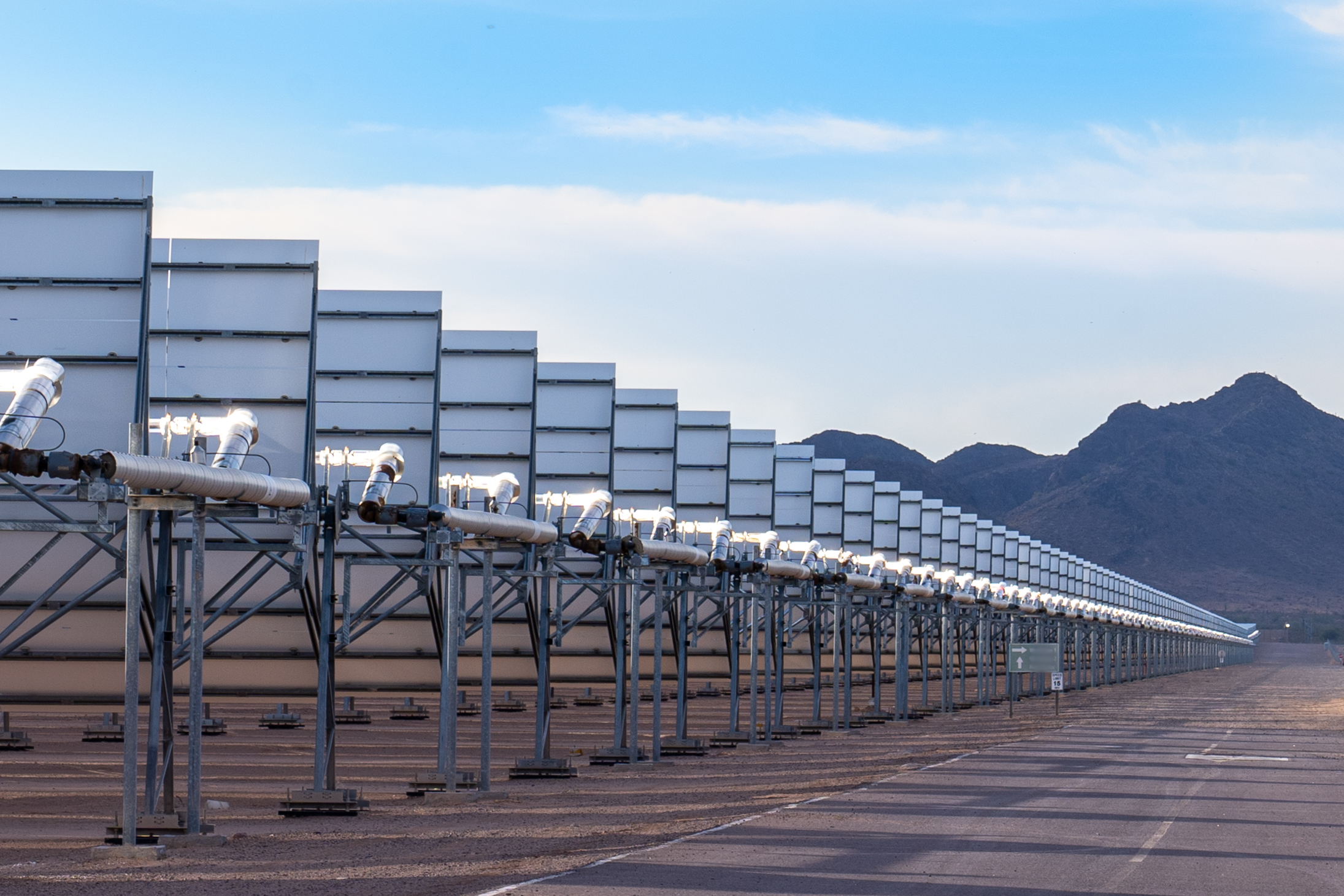Sometimes, the right things come together at just the right time, and magic happens.
That was the case earlier this month when President Biden announced that his administration was preparing to disperse the first $7.3 billion of a $9.7 billion grants and loan program to sixteen rural electric cooperatives, all of which are working to decarbonize their electric systems. The announcement was remarkable for three reasons: first, it marks the largest single investment in rural electrification since the Great Depression. Second, it’s the largest block of infrastructure investment specifically geared towards rural communities – which in recent years have not been the strongest part of Biden’s base. And third, it marks just the tip of the iceberg for an unfulfilled, bipartisan hunger for clean energy in rural America.
In 2019, we sat down to work on what, at the time, felt like a persistent niche problem. While the rest of the country was rapidly phasing out high-cost coal, rural electric cooperatives were lagging, and it wasn’t clear why. But the discrepancy between rural coops and urban-focused investor owned utilities started spinning an increasingly political narrative – that rural America just wouldn’t get behind clean energy. But when we sat down with the generation and transmission cooperatives that serve 800+ load distribution coops, we learned something else – cooperatives were struggling under massive debts brought about by years of doubling down investments on the same coal plants, they had no access to the capital required to build new renewables and storage and were excluded from using renewable tax credits, and their creditors were just fine with the status quo. But worse yet, cooperatives had a real fear that big moves, even the right ones, would raise costs for their members; and many cooperatives are already serving persistent poverty counties.
Those findings were revelatory, and we formulated a proposition: what if we just provided a cash injection for cooperatives that wanted to make the transition? We’d design a voluntary program that could test the size of the market, and offer a pathway for real transition. An unlikely group of us set to work on proposing a federal program that could help cooperatives lift themselves out of the fossil investment cycle. Environmental advocates, rural advocates, and utilities formulated a plan that happily reinforced Biden’s real interest in investing in rural America, and a $9.7 billion program was born under the Inflation Reduction Act.
Most of us associate the Department of Agriculture with loan and insurance programs for American farmers. But when President Roosevelt set out to ensure that farms had electricity, he endowed USDA with a uniquely powerful loan program for rural electric cooperatives. These member-owned utilities, which range in size from hundreds of customers to hundreds of thousands of customers, serve about 10 percent of Americans (but the vast majority of the US land area, as they’re quick to point out), and have a long history of borrowing from USDA. Under the coined New Empowering Rural America, or New ERA, program, USDA was thrust in a new place: figuring out how to run a grants program that was primarily geared towards renewable energy.
New ERA was designed by Congress to provide high value grants and loans to rural cooperatives for renewable energy, efficiency, and decarbonization technologies, with the criteria that USDA search for the greatest possible emissions reductions. Without a ton of guidance from Congress, thanks to the Byrd Rule, USDA designed a contest. In May 2023, USDA announced the terms of this contest: by the end of September, any cooperative that wanted a bite at the apple would have to submit a “letter of intent” outlining what they could do by 2031 with up to $970 million of USDA money, and how deeply they’d cut emissions. Utilities were told to go “blue sky” and get creative, looking at renewables, storage, transmission, and could look at coal retirement or emissions displacement. But they had to do it quickly.
And cooperatives delivered. By July, nearly every cooperative we talked to was developing a New ERA plan, from large entities like Tri-State Generation and Transmission spanning Colorado and New Mexico or East Kentucky Power Cooperative, to smaller G&Ts like Alaska’s Golden Valley, to small load distribution cooperatives. And when USDA tabulated the results, it turns out that more than 150 cooperatives had submitted plans, asking for more than $20 billion, two times more than what USDA actually had to offer. It was a huge finding. Overnight, the narrative had turned from cooperatives as clean energy skeptics to champions. We estimated that over 75 percent of rural electric customers were served by a cooperative that had applied for a New ERA grant.

Which brings us to earlier this month, and USDA’s announcement that finalists had been selected. From the pool of initial applicants, USDA invited the most ambitious utilities to submit full applications, and has now made clear their intent to close deals with 16 cooperatives in the next few months for massive investments in clean energy.
Already, the details coming out about the applicants and the scale of this program are breathtaking. USDA expects that the $7.3 billion that have already been announced will trigger $29 billion in clean energy investments, driving 10,000 megawatts of capacity in new solar, wind, storage, and hydroelectricity, the repowering of the Palisades nuclear plant, and one carbon capture project in North Dakota. And the individual renewable and storage projects are truly transformational. Dairyland (in Wisconsin and Minnesota) is expected to pull in $573 million in grants and loans to build solar and wind across their service territory, which as a rough estimate could serve more than half of its demand. And Arizona Electric Cooperative, aiming to procure 730 MW of solar, 70 MW of wind, and more than 700 MW of storage capacity looks to be on a pathway to serve more than half of its demand with clean energy thanks to New ERA. Similarly, coops like Tri-State, Seminole (Florida), and San Miguel (Texas) could be serving up to a quarter of their load with New ERA-spurred clean energy in just a few years.
This is an extraordinary, and uplifting moment. Despite not always seeing eye-to-eye, utilities and clean energy advocates can come together to ensure that rural communities are benefiting from the energy transition. It’s a moment where dedicated lawmakers and regulators trusted in their constituents to bring their best to the table, and it’s a moment of magic that draws back the curtain to reveal that cooperatives are, in fact, ready to step up as leaders in clean energy.
This is an extraordinary, and uplifting moment. Despite not always seeing eye-to-eye, utilities and clean energy advocates can come together to ensure that rural communities are benefiting from the energy transition.
Jeremy Fisher
Sierra Club Principal Advisor, Climate and Energy
